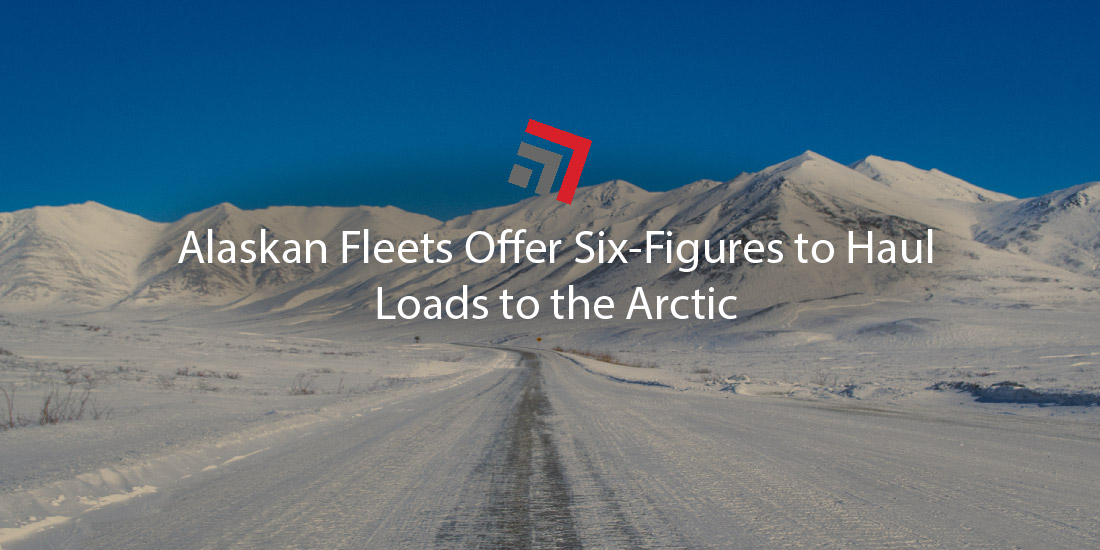Attention drivers! Alaska is looking for the insane…the intrepid…and the adventurous. They’re looking for folks with a lot of bravery and, maybe, a tinge of crazy.
If driving through the prairies of the Midwest or the turnpikes of the East Coast has become too mundane, the state far to the north is calling your name.
Drilling, mining boom creates demand for drivers
Local trucking fleets are on the hunt for drivers to haul equipment, chemicals, and other loads as more drilling and mining projects get the green light in Alaska.
However, with the nickname “The Last Frontier”, Alaska is likely the last place in America that job nomads will look.
No offense, as Alaska is one of the most beautiful parts of the country, but it can also be an isolating and dark expanse—thousands of miles away from the contiguous U.S.
Truck drivers, and their families, aren’t just going to uproot everything from a quiet Kansas City suburb or trendy apartment in Nashville to the recluses of Alaska on a whim and modest trucking gig.
Even in the lower 48 states, there’s a shortage of pro truck drivers in the industry, so how are trucking companies in Alaska going to onboard qualified talent?
Drivers can make north of $150K a year
The short answer, money.
Fleets are advertising massive salaries in a six-figure ballpark to haul loads up north. Sourdough Express, an Anchorage-based carrier, told FreightWaves that drivers can earn from $95,000 to $120,000 with health care, retirement, and PTO.
Sourdough has plans to more than double its driver pool over the next few years.
With these mining and drilling projects heating up, compensation is also increasing. Another trucking company, Alaska West Express, increased driver compensation by 11 percent this year.
A round trip haul from Fairbanks to Prudhoe Bay (near oil fields by the Arctic Ocean) will pay around $1,500. Drivers can expect to make this route, a lengthy 11-hour drive, 100 to 115 times a year.
Upon that math, it’s even more tempting. Drivers can earn around $150,000 to $170,000 yearly with benefits.
Six-figure salary meets four seasons of sketchy road conditions
So, not bad. What’s the catch?
Well aside from having to relocate, Alaska is not exactly a cakewalk with its roadways and conditions either.
The country’s largest state (by size) has one of least developed highway systems in the U.S. While infrastructure upgrades are queued up to improve freight movement, there’s far and few lanes of travel to haul loads.
Limited infrastructure aside, the real catch, and the one that demands such competitive salaries, are conditions of these roads. Well in this case, a single road, Dalton’s Highway.
A trip from Fairbanks to Prudhoe Bay can only be made via this lone stretch of road. The 414-mile route is susceptible to Alaska’s worst weather conditions.
Ironically, unlike the lower states, the winter months are typically the best time of the year to carry out business on Dalton’s Highway.
When temperatures shoot below negative 20, the road becomes ice-packed with snow and actually gives the best traction for rigs.
However, the other seasons can have the highway look a little less appealing.
Fall and spring make the road slushy, while summer will either reveal a dusty roadway or one that’s slick from calcium that’s used to make the road…less dusty.
Not for the average trucker
Obviously, safety is the primary concern fleets have with loads. While driver positions are open to the lower 48 states, carriers prefer to hire Alaskan residents. It’s only because of the growing demand for drivers that has led many to expand their recruitment out of state.
Many outsiders who are hired had previous haul experience with log trucking in the Pacific Northwest.
An understanding of dangers too is critical. Even though the winter has preferred road conditions, snowdrifts can desert drivers for days until rescue.
Drivers are also expected to fix their own trucks if needed as tow trucks or other maintenance services are not easily accessible.
Final Thoughts
It’s truly another world that far up the globe. Days and nights don’t follow curfew and the weather can run amok.
In fact, much of the haul road is in the Arctic Circle. Igloos, not truck stops, are the closest structures and, while highway patrol may not be around to issue tickets, polar bears certainly can’t be sweet talked should one approach a truck.
Please contact us if you have any questions regarding this topic or any others in domestic logistics. In addition, stay up to date with weekly headlines from both trucking and rail via our Road Map newsletter.
More blogs similar to this:



Recent Comments